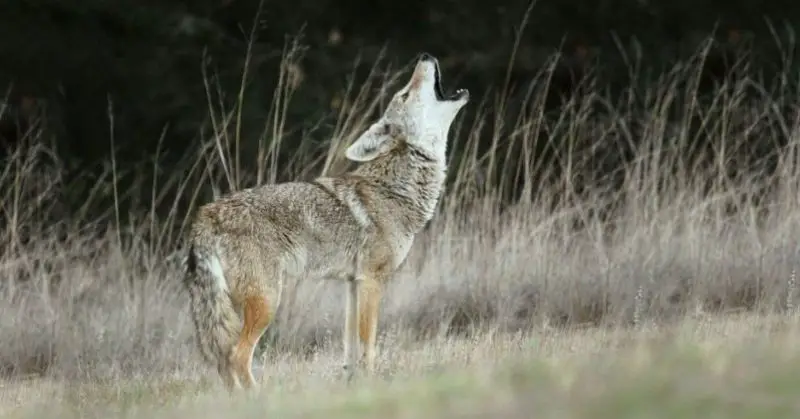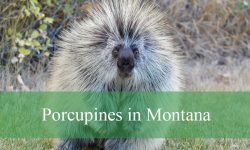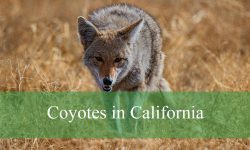When the sun sets over Illinois suburbs, the streets grow quiet—but somewhere in the distance, a chilling howl pierces the night. It’s not a stray dog or a neighborhood pet. It’s a coyote. Once creatures of open prairies and forests, wild coyotes have adapted astonishingly well to suburban life. From Chicago’s outskirts to smaller towns like Naperville and Rockford, these intelligent predators are becoming a regular presence in backyards, parks, and even schoolyards.
Coyotes were once feared as wilderness pests, but today, they’re thriving right in the heart of human communities. They scavenge from garbage bins, hunt rodents under streetlights, and raise pups just a few yards away from homes. While they rarely pose a direct danger to people, their growing numbers raise important questions: How dangerous are suburban coyotes really? Why are they thriving here—and what should we do about it?
In this comprehensive guide, we’ll uncover the scary truth about wild coyotes in Illinois suburbs—their behavior, adaptability, and interaction with humans. By the end, you’ll understand why coexistence requires knowledge, caution, and respect for these clever predators that refuse to be driven away.
The Rise of Coyotes in Illinois

A Species on the Move
Coyotes (Canis latrans) are native to North America and were once confined mainly to open plains and deserts. But after gray wolves were eradicated from much of the U.S., coyotes expanded their range dramatically. By the late 20th century, they had spread across all of Illinois—including urban and suburban regions.
According to researchers at The Urban Coyote Research Project, started in Chicago, coyotes now live in nearly every suburb surrounding the city. They thrive in areas like Naperville, Schaumburg, Arlington Heights, and even downtown Chicago, adapting to human activity with remarkable success.
Why They Love the Suburbs
Coyotes are opportunists. Illinois suburbs provide them with everything they need:
- Abundant food – small mammals, garbage, pet food, and even fallen fruit.
- Shelter – wooded lots, golf courses, cemeteries, and storm drains.
- Few predators – with no wolves or large carnivores to compete, coyotes dominate.
They’ve become what biologists call “urban adapters”—animals that thrive alongside humans by exploiting our resources and spaces.
What Do Coyotes Look Like?
Physical Traits
Coyotes resemble medium-sized dogs, standing about 24 inches tall at the shoulder and weighing 25–40 pounds. They have long legs, bushy tails with black tips, and narrow, intelligent faces with sharp, upright ears. Their coats range from grayish-brown to reddish-tan depending on the season.
In Illinois, they often appear larger due to thick winter fur. Many people mistake them for wolves, but coyotes are smaller, leaner, and move with a distinctive, stealthy gait.
Identifying Coyotes in the Suburbs
Common signs of their presence include:
- Tracks with four toes and distinct claw marks.
- Yipping, howling, or barking choruses heard at night.
- Scattered animal remains or garbage disturbances.
- Burrows or dens near creeks, culverts, or brush piles.
The Shocking Adaptability of Suburban Coyotes
Nighttime Hunters
Coyotes are primarily nocturnal in urban settings to avoid humans. They patrol neighborhoods at night, hunting rabbits, squirrels, voles, and even rats. In Illinois suburbs, they also scavenge from trash cans and compost piles, finding easy meals without expending much energy.
Interestingly, studies show that coyotes in cities eat more fruit and human-related waste than their rural counterparts, illustrating their flexible diet.
Smart and Strategic
Coyotes are incredibly intelligent. They learn patterns—when garbage collection happens, when people walk their dogs, and which areas are safest. Some even recognize traffic lights, waiting for gaps in cars to cross busy roads.
They also work together. In some cases, one coyote distracts a pet or animal while another circles behind to attack. This cooperative hunting shows a level of problem-solving rare among wild carnivores.
Urban Dens
Coyotes den in surprisingly small spaces—under decks, in drainage pipes, or behind sheds. During breeding season (January–March), females prepare these sites for pups. Most suburban residents never notice until pups begin exploring in early spring.
Are Coyotes Dangerous to People?
Rare but Possible
Attacks on humans are extremely rare, but they do happen—usually when coyotes lose fear of people due to feeding. Children and small pets are the most vulnerable. In Illinois, a few isolated incidents have occurred, often linked to coyotes accustomed to handouts or easy food sources near homes.
While coyotes generally avoid confrontation, they are territorial during pup-rearing season (April–June). If someone approaches their den, they may growl, bark, or bluff-charge to drive the intruder away.
Pets at Risk
Coyotes see small dogs and cats as potential prey or competitors. Each year, suburban veterinarians in Illinois treat numerous pet injuries linked to coyote encounters. To protect your pets:
- Keep cats indoors.
- Walk dogs on short leashes.
- Supervise pets during dawn and dusk.
- Secure pet food and garbage.
Coyotes are most active just before sunrise and after sunset, so caution during these hours is crucial.
The Ecological Role of Coyotes
Nature’s Pest Control
Despite their fearsome reputation, coyotes play a vital role in Illinois ecosystems. They regulate populations of rodents, rabbits, and other small mammals that can damage crops and spread disease.
In urban environments, they act as natural pest managers, helping reduce rat populations and preventing the overpopulation of small mammals. Removing coyotes often leads to an explosion of these pests, disrupting ecological balance.
Keystone Species
Coyotes are considered a keystone species, meaning their presence supports ecosystem stability. By preying on weak or sick animals, they help maintain healthier wildlife populations.
Their adaptability also ensures that no ecological niche goes unfilled, preventing imbalances caused by human expansion.
The Scary Truth: How Close They Really Are
Living Next Door
In many Illinois suburbs, coyotes live closer than most people realize. Studies using GPS collars show that some coyotes sleep within a few hundred feet of homes and travel through backyards nightly.
They’re often invisible because of their nocturnal habits, but motion-activated cameras reveal just how common they are. In Cook and DuPage Counties alone, hundreds of coyotes have been documented navigating residential areas without detection.
Bold Coyotes and Human Habituation
The real danger arises when coyotes lose their natural fear of humans. Feeding them—intentionally or unintentionally—teaches them that people mean food, not threat. Once this happens, coyotes may approach humans, attack pets, or become aggressive.
Habituated coyotes are more likely to be involved in conflicts, and unfortunately, they often have to be euthanized. Prevention through education is far more effective than eradication.
How to Stay Safe in Illinois Suburbs
Prevention Tips
- Never feed coyotes—not directly or indirectly.
- Secure trash cans with tight lids.
- Feed pets indoors and clean up outdoor food waste.
- Install motion lights to deter nighttime visits.
- Block access under decks, sheds, or porches where coyotes might den.
What to Do If You Encounter One
If you come face-to-face with a coyote:
- Stay calm and don’t run.
- Make yourself appear larger by waving your arms.
- Shout or clap loudly.
- Throw small stones (not to harm, but to scare).
- Maintain eye contact while backing away slowly.
This process, known as hazing, re-establishes fear of humans and helps prevent habituation.
Coyotes and Illinois Wildlife Laws
Protection and Control
Coyotes are not protected as endangered species in Illinois. However, they play an important ecological role, and random killing is discouraged. The Illinois Department of Natural Resources (IDNR) allows controlled removal when coyotes pose legitimate threats to public safety or livestock.
Wildlife agencies focus on education over extermination, teaching residents how to coexist safely rather than eliminating entire populations.
Urban Research and Conservation
The Urban Coyote Research Project continues to study how these animals survive in metropolitan environments. Their findings show that coyotes in the Chicago region help maintain biodiversity, even in human-dominated landscapes.
Myths vs. Facts About Illinois Coyotes
Myth |
Truth |
|---|---|
Coyotes are dangerous and attack people often. |
False. Attacks are extremely rare; most avoid humans. |
Coyotes live only in rural areas. |
False. They thrive in suburban and urban settings. |
Killing coyotes makes areas safer. |
False. Removing them often causes population rebounds. |
Coyotes travel in large packs. |
False. They usually move alone or in small family groups. |
They are harmful to the environment. |
False. They help control pests and maintain ecological balance. |
Interesting and Scary Facts About Illinois Coyotes
- Coyotes can run up to 40 mph and leap fences over 6 feet tall.
- They communicate using distinct yips and howls to coordinate movement.
- Coyotes mate for life, returning to the same territory year after year.
- Their territories in suburban areas can cover just a few square miles.
- Coyotes can survive weeks without food and adapt quickly to new diets.
- In winter, they form family hunting groups to increase success.
- Despite their fearsome image, they are essential to urban ecology.
Frequently Asked Questions About Coyotes in Illinois
Are coyotes dangerous to humans?
Only in rare cases. Most avoid humans unless they’ve been fed or cornered.
Can coyotes climb fences?
Yes, they can jump or scale fences over six feet high. Adding rollers or angled extensions can help.
Do coyotes carry diseases?
They can carry rabies and mange, but transmission to humans is extremely rare.
What should I do if a coyote attacks my pet?
Make noise to scare it off immediately. Seek veterinary help and report the incident to animal control.
Do coyotes eat outdoor cats?
Unfortunately, yes. Free-roaming cats are at high risk, especially at night.
Will coyotes disappear if hunted?
No. They reproduce faster when populations drop, often resulting in more coyotes, not fewer.
Conclusion
The scary truth about wild coyotes in Illinois suburbs is not that they’re out to get us—but that they’re living among us, adapting intelligently to every opportunity we provide. They are survivors, predators, and problem-solvers—creatures as fascinating as they are misunderstood.
Coyotes are here to stay, and learning to coexist with them is no longer optional—it’s essential. By understanding their behavior, securing our homes and pets, and respecting their role in the ecosystem, we can share the suburbs safely with these remarkable animals.
So the next time you hear a distant howl beneath the Illinois moonlight, remember—it’s not a monster lurking in the dark. It’s nature, alive and thriving right outside your door.






